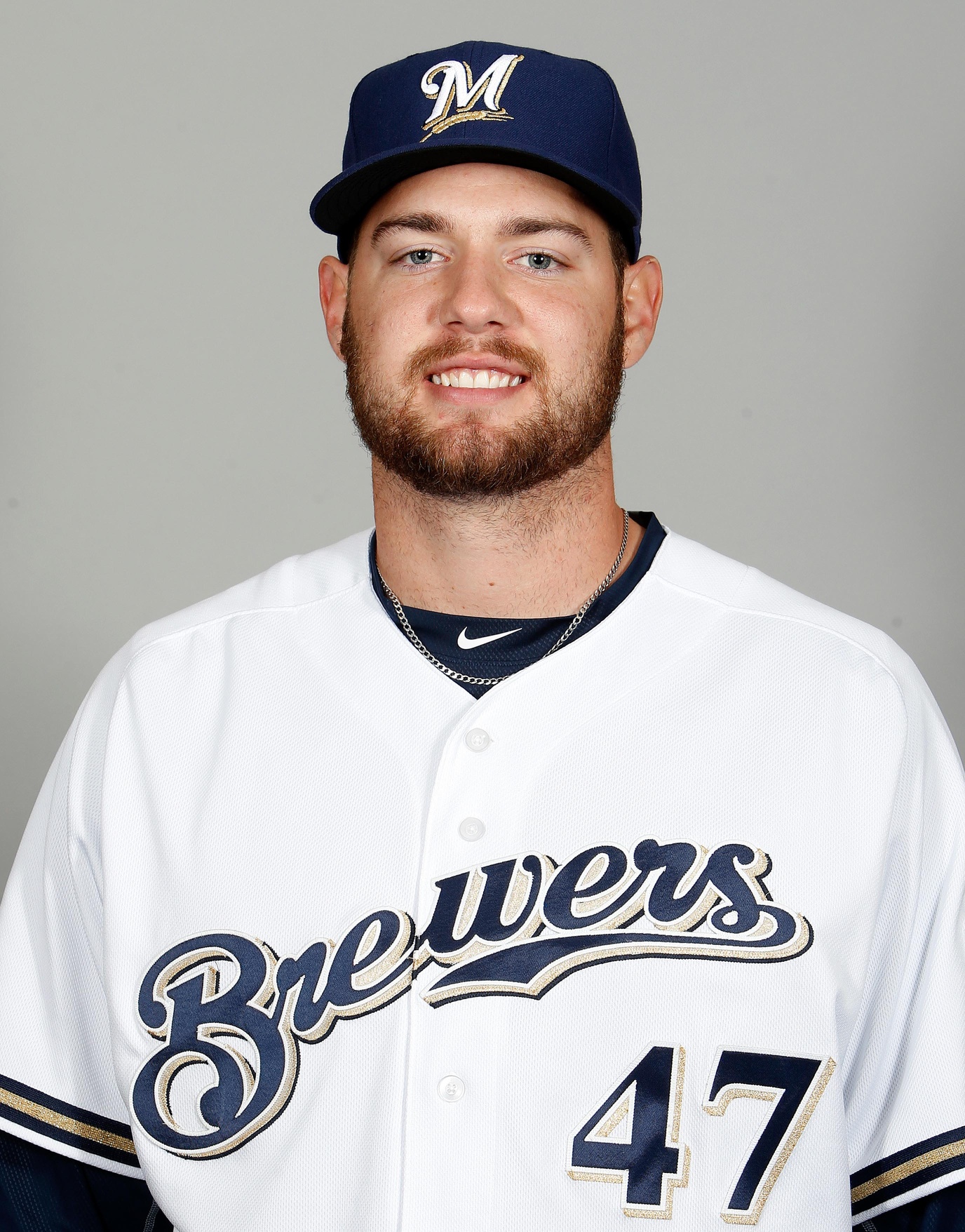When Doug Melvin orchestrated last summer’s blockbuster deal with Houston, the pitching prospect who generated the most buzz was lefty flamethrower Josh Hader, and rightfully so. Hader has since risen to become one of the top left-handed pitching prospects in the game, though his performance has hit a bit of a snag since a promotion to AAA Colorado Springs.
Adrian Houser was the other arm acquired in that deal, considered to be the fourth-best of the quartet alongside Hader and outfielders Brett Phillips and Domingo Santana. In reality, however, that probably said more about the quality of the other three players than it is a knock on Houser’s profile. Craig Goldstein had a chance to get eyes on Houser during spring training this year, noting that his plus fastball sits in the 94-95 MPH range and topping out at 97. He also possesses a plus power curveball that he throws in the low-80s that he can drop in the zone for strikes or get swings on out of the zone. Houser’s 82 MPH changeup is still a developing offering, but he may not need it as much more than a show me pitch to keep hitters honest. With a physical 6’4″ and 235 lb frame, Houser is able to repeat his delivery well and Goldstein concluded that he should get multiple chances to stick as a starter.
The 2011 2nd-rounder posted a 2.92 ERA and 3.55 FIP in 37.0 innings in AA Biloxi following the trade, earning a brief call-up to the big leagues last September where he threw two scoreless innings in relief. He began 2016 back in AA and when you look at his ERA of 5.25 in 70.1 innings, it’s easy to conclude that he has taken a step back this year. However Houser should serve as a reminder that in the minor leagues, the results aren’t as important as how one gets there.
One of the knocks on Houser has been his ability to locate the baseball, with MLB Pipeline noting before the season that he still had gains to make with his command and control. Houser must have heeded that advice, as his 2.8 BB/9 rate this year is his lowest total since a 50 inning stint in short-season ball in 2013. His 7.2 K/9 rate this season is down a shade this year, but isn’t all that far off his career average in the minors and is still a solid clip to miss bats at. Perhaps most impressive is how the righty has induced grounders at a 62 percent clip this season, allowing just five home runs across his 13 starts. While Houser’s run prevention numbers haven’t been impressive this season, he was hurt by a .326 BABIP against, as well as a low 62.4 percent strand rate. His 3.68 FIP is more representative of his true performance this season when considering his peripheral numbers.
The fact that Houser was enjoying a nice under-the-radar developmental campaign makes yesterday’s news all the more depressing.
Go Brew Crew! pic.twitter.com/BMQxeVYm8C
— Adrian Houser (@AdrianHouser12) July 21, 2016
The 23 year old had just captured June’s “pitcher of the month” award for the Shuckers, but hadn’t pitched since June 23rd after experiencing some forearm tightness, which in this case was a precursor to Tommy John surgery. Houser’s surgery has already been performed successfully, and he’ll miss the rest of the 2016 season and most of, if not all of, 2017 as well.
Houser will be a 25 year old in 2018 and coming off of ligament replacement surgery, but hopefully this will be just a small bump in the road on his way to achieving the number four starter potential that Pipeline says Houser has the makings to become. Even if Houser does not stick as a starter, however, in the 2016 Brewers Top 10 BaseballProspectus noted the righty could close or work in the eighth inning with two plus pitches.

2 comments on “Adrian Houser and Pitching Development”